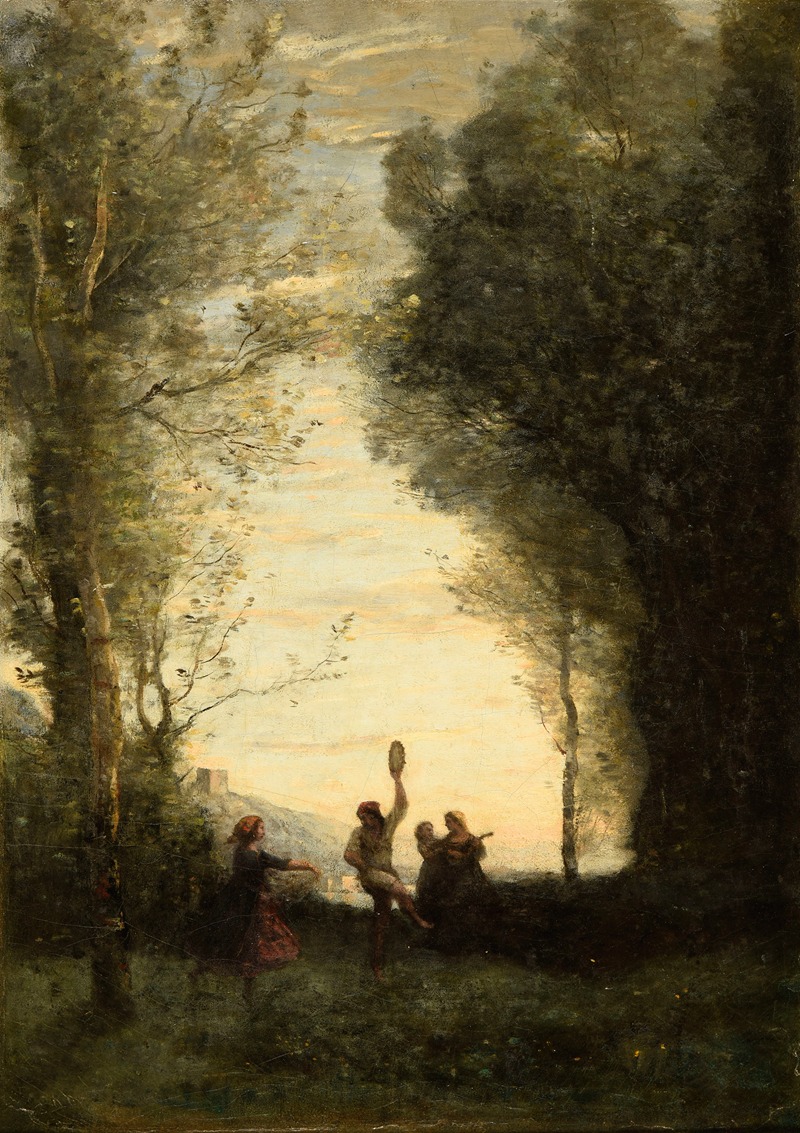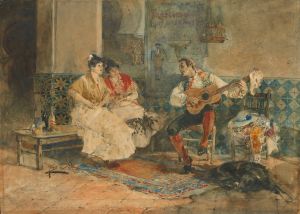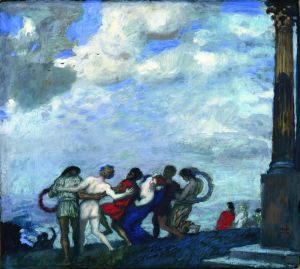
La Danse italienne
A hand-painted replica of Jean-Baptiste-Camille Corot’s masterpiece La Danse italienne, meticulously crafted by professional artists to capture the true essence of the original. Each piece is created with museum-quality canvas and rare mineral pigments, carefully painted by experienced artists with delicate brushstrokes and rich, layered colors to perfectly recreate the texture of the original artwork. Unlike machine-printed reproductions, this hand-painted version brings the painting to life, infused with the artist’s emotions and skill in every stroke. Whether for personal collection or home decoration, it instantly elevates the artistic atmosphere of any space.
Jean-Baptiste-Camille Corot, a prominent French landscape and portrait painter, created "La Danse italienne" (The Italian Dance) in 1845. Corot is often associated with the Barbizon School, a movement that emphasized realism and the depiction of natural settings. However, his work also bridges the gap between the Neoclassical tradition and the emerging Impressionist movement.
"La Danse italienne" is an oil painting that exemplifies Corot's skill in capturing both the human form and the essence of a moment. The painting depicts an Italian woman in traditional attire, caught in the midst of a dance. The dancer's pose is dynamic, with one arm raised and the other holding a tambourine, suggesting movement and rhythm. Her costume, characterized by its vibrant colors and detailed patterns, reflects the traditional dress of Italian peasants, adding a layer of cultural authenticity to the work.
The background of the painting is a lush, verdant landscape, typical of Corot's style. He often used soft, diffused light to create a sense of atmosphere and depth, and "La Danse italienne" is no exception. The trees and foliage are rendered with a delicate touch, providing a serene and naturalistic setting that contrasts with the lively energy of the dancer. This juxtaposition highlights Corot's ability to blend figure and landscape harmoniously.
Corot's technique in "La Danse italienne" demonstrates his mastery of both form and color. The brushwork is fluid and expressive, capturing the texture of the dancer's clothing and the movement of her body. The use of light and shadow is subtle yet effective, giving the figure a three-dimensional quality. Corot's palette in this painting is rich and varied, with warm tones dominating the figure and cooler hues in the background, creating a balanced and cohesive composition.
The painting reflects Corot's interest in Italian culture, which he developed during his travels to Italy. Between 1825 and 1828, Corot made his first trip to Italy, where he was deeply influenced by the country's landscapes and people. This experience had a lasting impact on his work, as seen in "La Danse italienne," where he combines his admiration for Italian traditions with his own artistic sensibilities.
"La Danse italienne" is housed in the Musée du Louvre in Paris, one of the world's most renowned art museums. The painting is part of the museum's extensive collection of 19th-century European art, which includes works by many of Corot's contemporaries. It remains a significant piece within Corot's oeuvre, illustrating his versatility as an artist and his ability to capture the spirit of a moment with grace and precision.
In summary, "La Danse italienne" by Jean-Baptiste-Camille Corot is a masterful representation of both the artist's technical prowess and his deep appreciation for Italian culture. The painting's dynamic composition, rich color palette, and harmonious blend of figure and landscape make it a standout work in Corot's career and a treasured piece in the Louvre's collection.


















